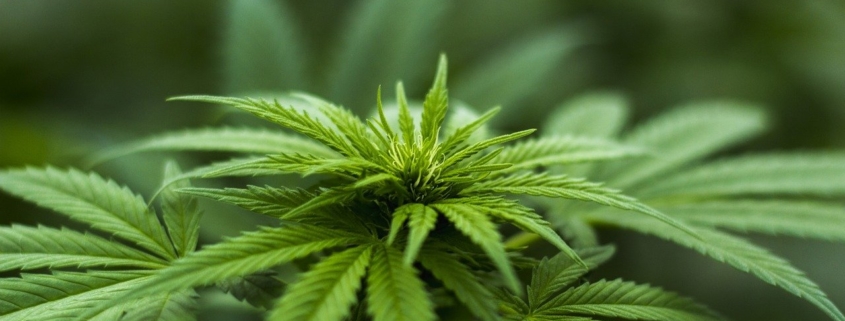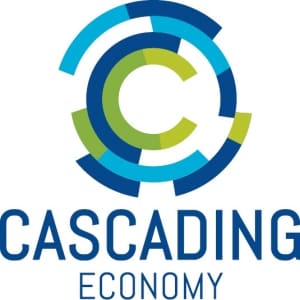
Hemp – The revival of an allrounder crop
Background: Hemp – an old friend
Our society is based on petroleum – a substance that is present in all walks of life. Everyone comes into contact with the world’s largest commodity on a daily basis, from petroleum-based plastics in the supermarket to driving to the gas station by car. With the ever more presence of climate change, which demands mankind to leave fossil raw materials in the ground, the search for alternative raw materials is being conducted with increasing interest. An old friend could represent a suitable alternative with her diverse range of practical applications. Hemp is probably one of the most versatile plants on earth in terms of application. Whether textiles, plastic substitutes, biofuels or as medicine – this plant is considered an allrounder among crops.
The potential of hemp has long been known. The oldest dated piece of textile was made from hemp. The car pioneer Henry Ford also demonstrated the versatility of this raw material with his car body made from soy and hemp fibers. His “Hemp Car” should later be ready for series production and, thanks to hemp oil, be able to drive in an environmentally friendly manner. More than 60 years later we see a further development from companies like Hempearth: an airplane made of hemp fibers. With the right processing, hemp proves to be extremely robust. Ten times as hard as steel and yet flexible in use. Also because of its lightness, which is particularly important in aircraft construction. Even aluminum weighs more. This saves a lot of fuel, which the plant supplies with hemp oil, for example1.
Furthermore, cannabis has a broad and diverse therapeutic spectrum and has been approved for medical purposes in Germany since May 2016. The most common areas of application are: chronic pain, multiple sclerosis, Tourette’s syndrome, depressive disorders and ADHD2. In Canada, cannabis has been freely available for medical purposes since 2003, and since October 2018 it has been the first country that has been fully legalized it after Uruguay.
In the public discourse, the discussion about hemp is limited to the use of the drug cannabis and hashish and is mostly associated with them.
Hemp is not just a crop that can be used in different ways. It also has a history of social explosiveness. The “Jim Crow” law from the 19th century in America, for example, shows the connection between racism and the use of cannabis. With the assumption that marijuana was responsible for the fact that black entertainers refused to paint their faces according to the regulations for the first time, or refused to go to the back of the tram, hemp quickly fell into a bad light for the authorities. In New Orleans, the birthplace of jazz, this type of music was declared voodo Music. The white establishment saw a spawn of uncontrollable wild hashish dreams in jazz. The fact that nothing else was consumed in the luxurious hashish rooms of the “white man” was due to the ignorance of the population, which lasted into the 20th century and resulted in municipal regulations and laws against the rebellious “presumption” of the marijuana consuming Blacks and Mexicans were directed3.
Hemp is and will remain a societal political issue, but its advantages as a raw material of the future are being brought into the discourse more and more by its proponents.
Innovation: Sustainable hemp products
In recent history, hemp has impressed with unfamiliar uses: numerous cellulose products can be made from hemp. A useful process considering the increasing plastic problem in the oceans and the fields of the world. Hemp was the first natural polymer from which plastics were ever made. Cellulose products that can be made from hemp include cellophane, celluloid, and rayon.
Cellulose is a biodegradable natural polymer. Synthetic polymers, on the other hand, are “rot-proof” and can only be produced on the basis of fossil raw materials.
At the University of Alberta in Edmonton (Canada), a group of scientists recently presented their research results on a supercapacitor made from hemp fibers: the hemp battery. The study was presented in 2014 as part of the 248th National Assembly & Exhibition of the American Chemical Society (ACS), the world’s largest scientific society, in San Francisco4.
Dr. David Mitlin’s presented supercapacitor consists of hemp-derived nanosheets, which are otherwise typically made of graphene, a carbon compound of graphite. However, graphene is still extremely expensive to extract, which drives up production costs. In addition to the complex production, there is also a technical disadvantage, because the energy density can only be increased to a limited extent with graphene.
In order to produce high-quality carbon electrodes, the hemp is heated for 24 hours at 176 degrees, after which the remainder is briefly heated to 700 to 800 degrees and as a result carbon nano-layers are obtained. You get electrodes that are cheaper to manufacture, can be exposed to higher temperatures and deliver a higher energy density. This is twelve watt hours per kilogram and is therefore two to three times higher than with conventional batteries. A hemp battery can be charged up to 100,000 times with a charging time of just a few minutes5.
Potential: Hemp in construction
Building super batteries in the near future, which are based on cheap hemp and which have a higher efficiency and a longer lifespan than batteries that require expensive graphene, could mean a breakthrough in the battery market6.
Another possible application in which hemp can proof its potential on a large scale, is in the construction industry. Hemp is inherently fire and pest resistant. There is no need to add chemicals to ensure its performance in these areas. However, this is usually the case with synthetic insulation materials. Chemicals added to conventional insulation materials often contain volatile organic compounds. These have recently been linked to the rapid rise in the incidence of asthma and severe allergic reactions in Western countries. Hemp concrete and the lime and clay plasters on its surface are “breathing” and permeable to water vapor. Hemp concrete has the property, like clay, of being hygroscopic. That means it regulates the humidity. As a result, no moisture remains on the wall surfaces, and this in turn prevents the formation of mold spores, which can be harmful to human health7.
In combination with the supposed “waste” of a region, hemp has the potential to be a component in a cascading economy value chain. Due to its diversity, it is an adequate replacement for our oil-based society, which has always been there and its knowledge has to be reactivated and expanded through the technological advances of modern times.
This could also be interesting for you: Our Lignin Case!
References
1 https://hanfseite.de/news/voll-funktionsfaehiges-hanf-flugzeug-vorgestellt
2 https://hanfverband.de/faq/bei-welchen-krankheiten-kann-medizinisches-cannabis-angewendet-werden
3 HERER et. al. (2013): Die Wiederentdeckung der Nutzpflanze Hanf / Nachtschatten Verlag
4 https://sensiseeds.com/de/blog/wissenschaftler-praesentieren-hanfbatterie/
5 http://nanographene.org/documents/cannabis_graphene.pdf
6 https://www.gute-nachrichten.com.de/2015/06/wissen/batterien-auf-hanfbasis-koennten-die-speichertechnik-revolutionieren/
7 https://www.hanf-magazin.com/nutzhanf/baustoffe-aus-hanf/warum-hanfbeton-der-bessere-baustoff-ist/



